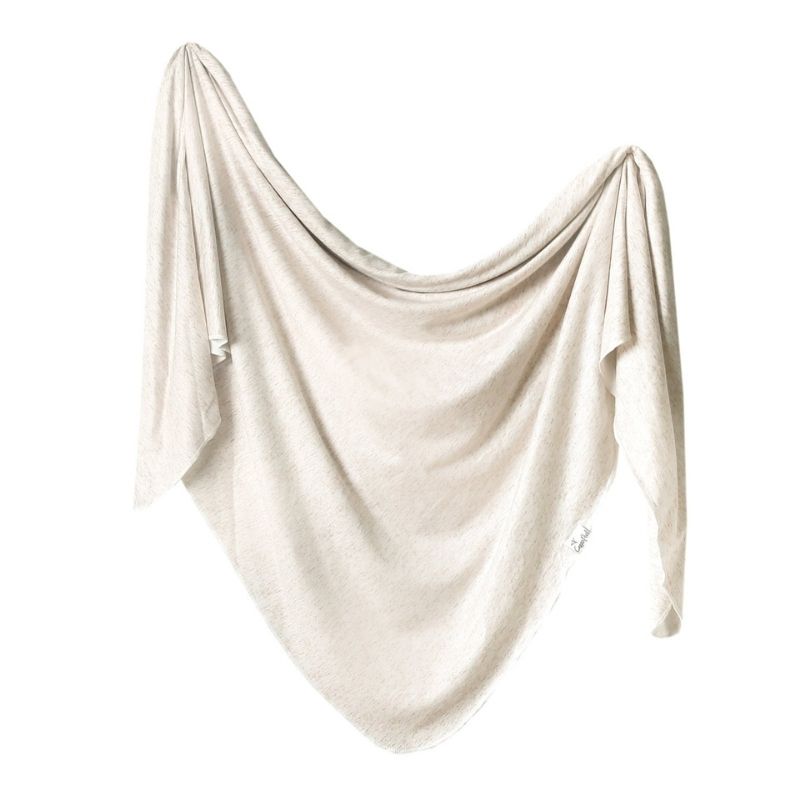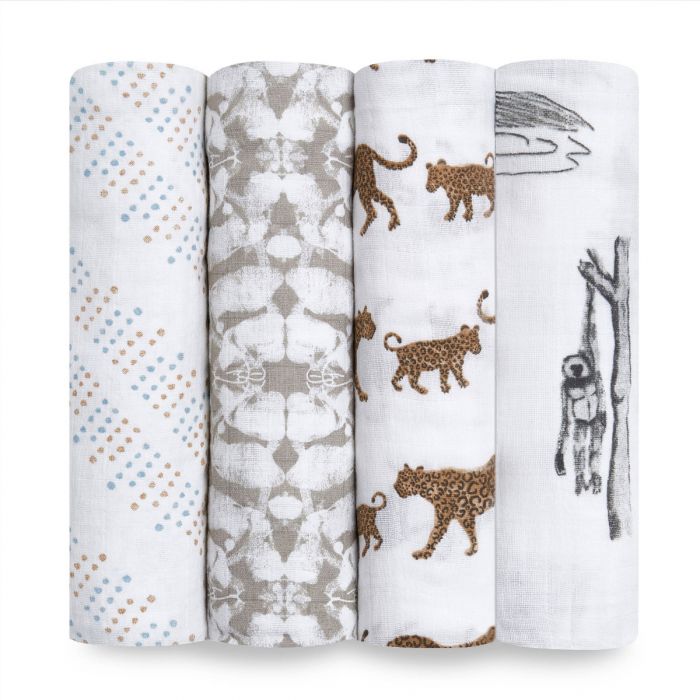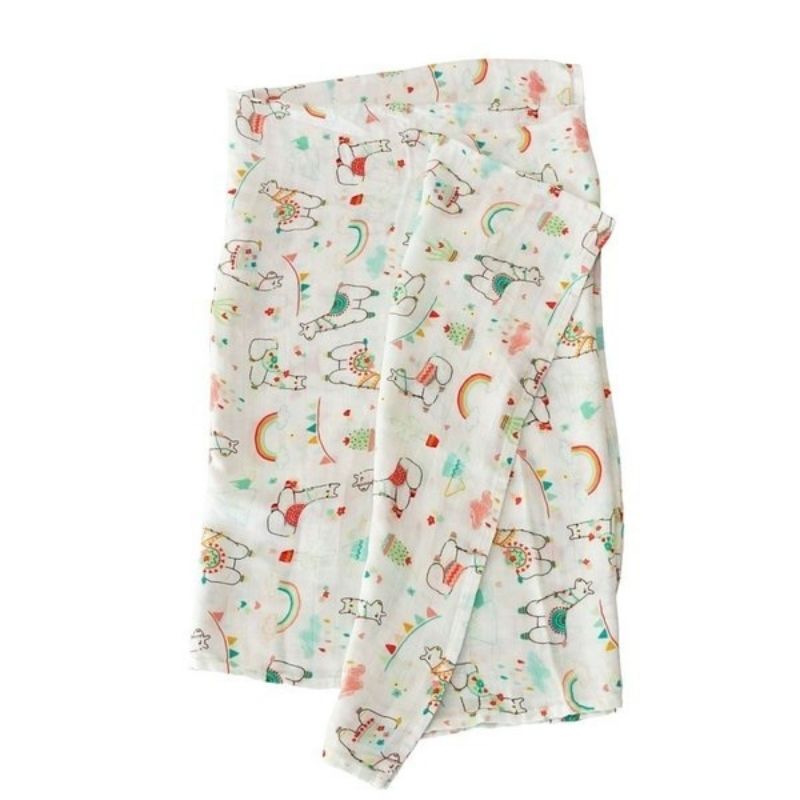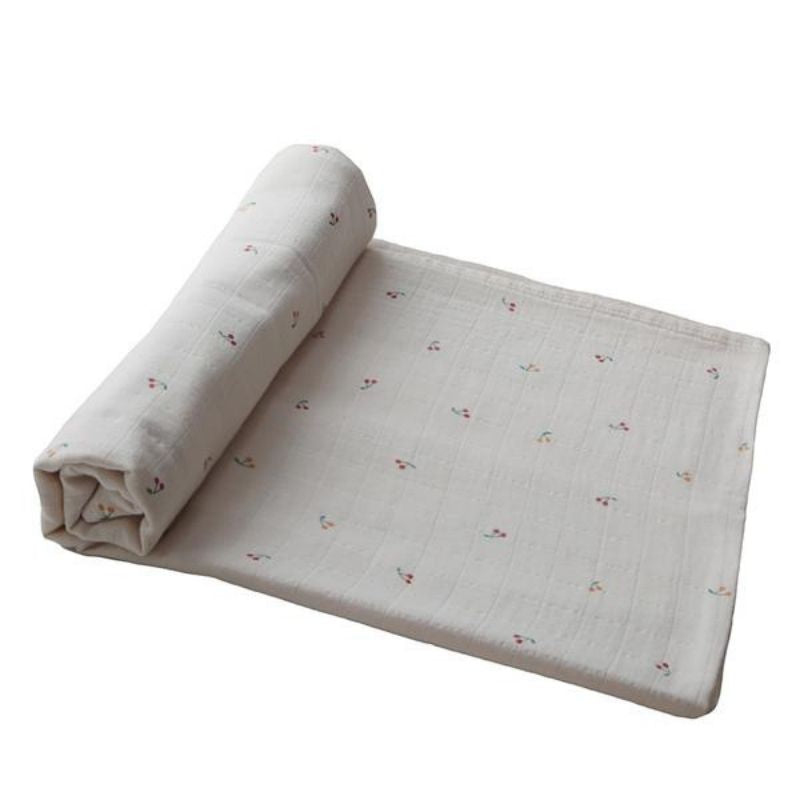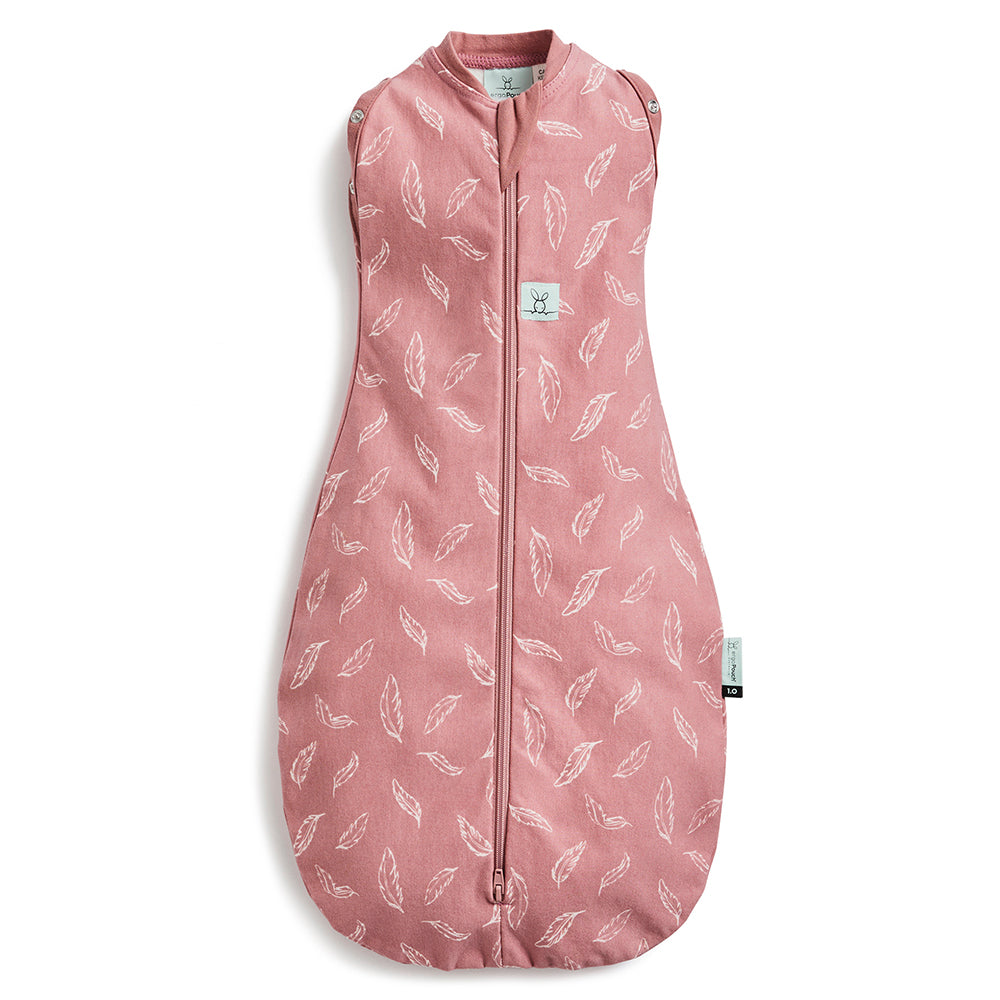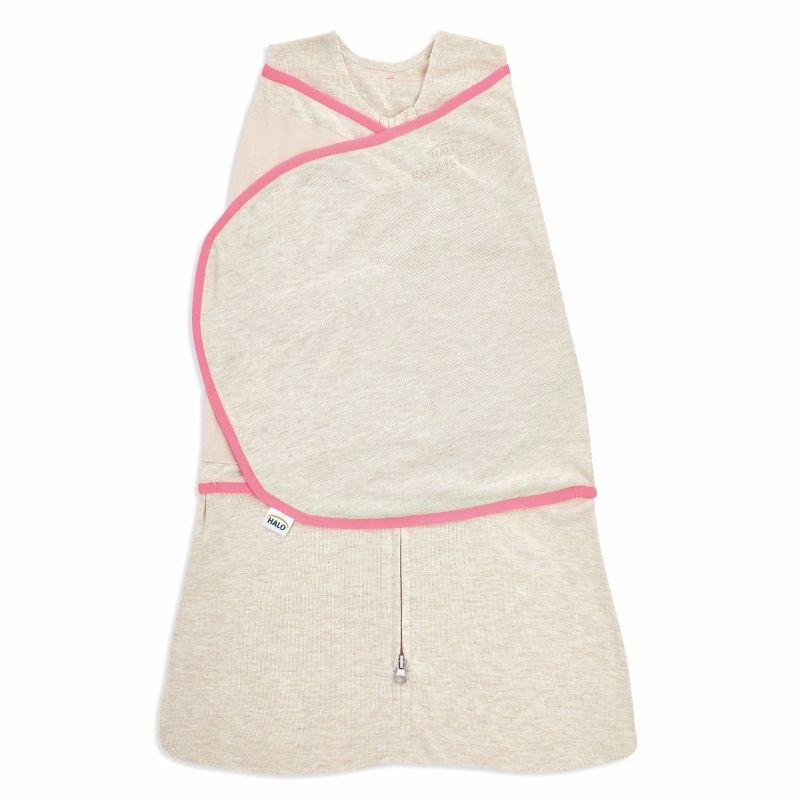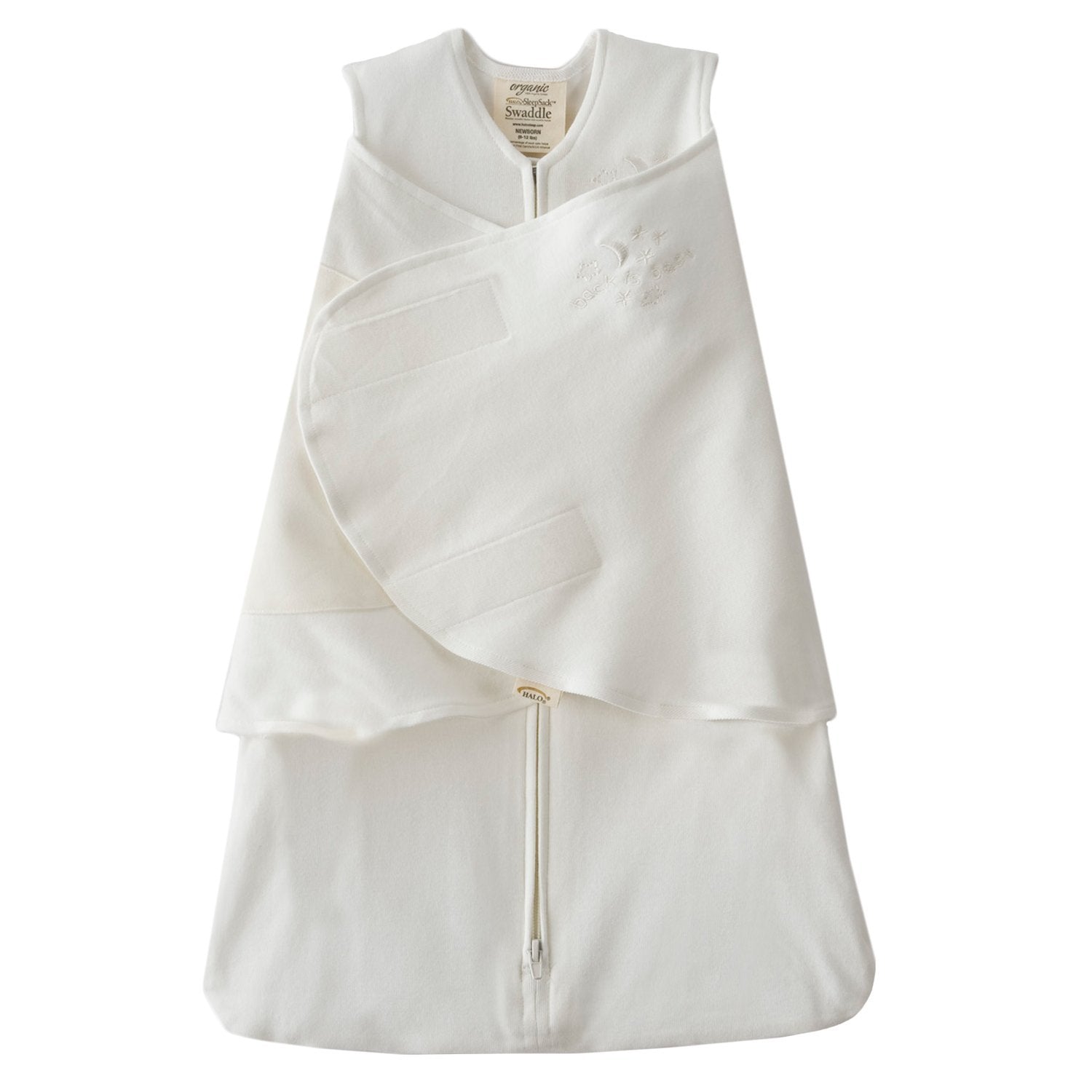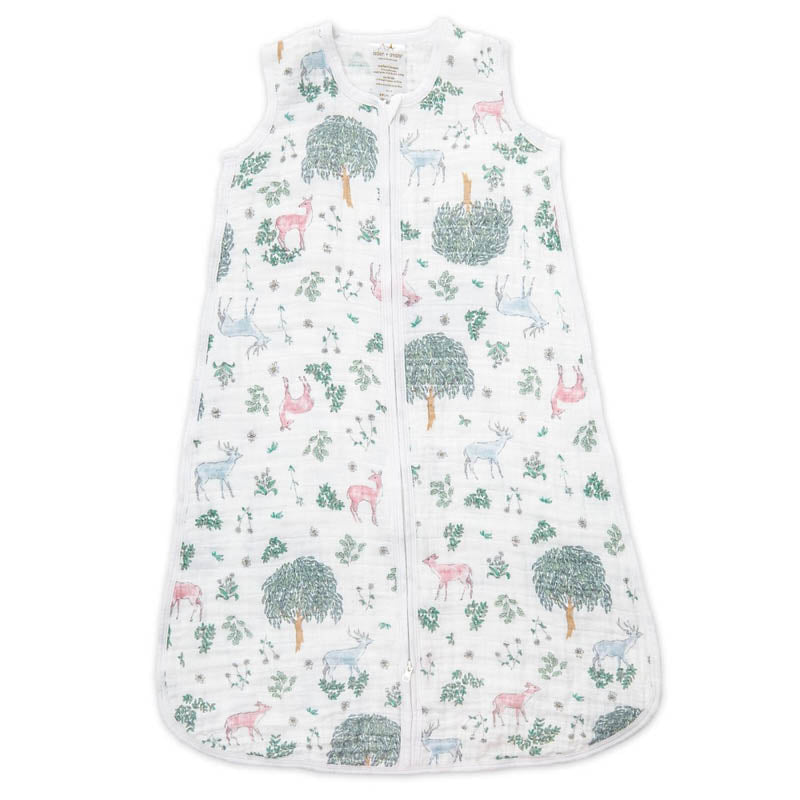Beginner’s Guide to Swaddling Your Baby
Jump to Section
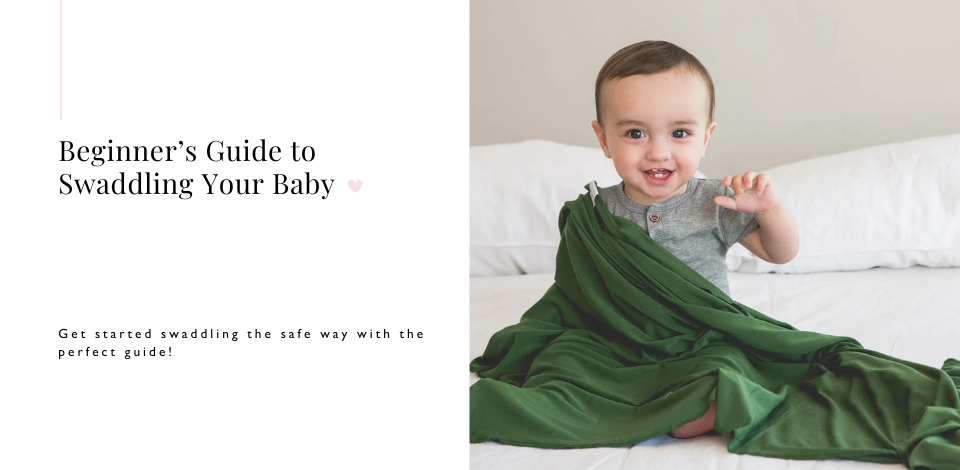
Swaddling is the practice of wrapping an infant in blankets or cloth to restrict the movement of their limbs. According to archeological records, swaddling has been around for over 4,000 years! Even though people have been swaddling for millennia, there are still lots of questions and concerns that pop up for new parents. In this article, we’ll answer the most commonly asked questions about swaddling and provide some expert tips and tricks — as well as a few of our favourite products for ensuring the softest, safest swaddle.
Let’s get wrapping!
Why Swaddle?
Swaddling mimics the cozy sensation of being inside the womb and many parents have found that gently wrapping their newborn into a light, breathable blanket can help calm the baby, allowing them to settle easier and sleep for longer. Research has shown that swaddling, alongside sound and movement, helps soothe crying babies. Swaddling can also help minimize the effects of the startle reflex, allowing infants to sleep without being startled by the movement of their limbs.
Is it Safe to Swaddle?
While some new parents may have concerns, it is safe to swaddle when done properly. You can introduce swaddling right away but be sure to stop the practice once your little one is rolling over on their own. Here are a few additional swaddling safety tips:
- Ensure your baby is on their back! Never lay them down on their stomach or side and make sure they’re sleeping on a firm, flat surface clear of any other items.
- Don’t swaddle your baby above their shoulders. Ensure their head and neck are unobstructed and be careful of loose fabric that can create choking hazards.
- Check your baby’s temperature and environment to prevent overheating. A swaddle can keep your kiddo warm and cozy, but make sure they’re not getting too warm. Signs of an overdressed infant include sweating, rapid breathing, damp hair, or flushed cheeks.
-
If someone else is going to look after your baby, make sure they also know about safe sleep practices and how to swaddle correctly. Take your time to explain (and show!) safe swaddling to them and have them practice with the baby before you leave them alone.
How Long Can I Swaddle My Baby For?
Welcoming a newborn into the world is an incredibly special time filled with joy, excitement, and of course, countless diaper changes and outfit swaps! Ensuring your little one stays comfortable and content during those precious slumbering hours is key. That's why having a cozy, functional sleeper wardrobe is essential right from the start!
From soft, breathable fabrics to easy dressing designs, the right newborn sleepwear can make those late nights (and early mornings) so much smoother.
In this guide, we'll cover all the must-have features to look for and share our top sleeper picks to give your baby the sweetest dreamland snuggles.
When Should I Stop Swaddling?
Generally speaking, you should stop swaddling your baby with both arms tucked in around the 2-month mark. After that, you can swaddle with one or both arms free — but as soon as your baby starts showing signs of being able to roll over, it is time to stop swaddling. A newborn’s neck is not strong enough to lift their head up off the ground. If they roll onto their tummies while swaddled, they would be unable to move from that position and could suffocate.
Some other signs your baby is ready to stop swaddling include: their startle reflex diminishing, they start waking up more frequently throughout the night, breaking out of the swaddle, or fighting being swaddled. It’s also important to remember that some babies never like being swaddled, or only enjoy it for a short time — don’t force this style of care if it isn’t working for your family.
What Are My Swaddling Options?
The standard ‘loose’ swaddle (sometimes also called a receiving blanket) is a piece of lightweight breathable fabric that has a multitude of uses outside the nursery. In addition to swaddling, these blankets are great for nursing, cuddling, or even tossing down on the floor for an impromptu tummy time session (or emergency diaper change). We love the silky-smooth feel of these bamboo & cotton muslin swaddles from LouLou Lollipop, and these 100% cotton swaddles from Aden & Anais come in a 4-pack with a wide variety of patterns to fit any nursery decor. The Copper Pearl knit swaddle blankets are made of premium knit and are lightweight and breathable with just a little bit of stretch to help you get your swaddle just right. Finally, we just love the slightly larger size of the swaddle blanket from Mushie — they pre-wash their 100% cotton muslin fabric for extra softness next to your little one’s skin.
As mentioned earlier, you can also buy wearable swaddling sleep sacks that remove the guesswork from swaddling. Some of our favourite swaddling sleep sacks include this adjustable one from HALO which allows for arms in or arms out for your baby’s comfort. HALO also makes a Temperature Regulating sleep sack that features IntelliThread™ technology, an innovative textile for newborns that absorbs heat, stores it, and then releases it back to your baby, maintaining an ideal temperature and avoiding heat spikes that often lead to wakeups.
If the big Velcro flaps are just not your thing, we recommend ErgoPouch Cocoon Swaddle Bags. These bags are designed to keep your baby snug and securely swaddled without the need for complicated wrapping. There are press studs in the armholes that convert the swaddle into your baby’s first sleeping bag once they are able to roll. If your nursery is a little warmer, you can also pick up the lighter-weight 0.2 TOG Swaddle Bag for room temperatures above 24°C.
How to Swaddle — Step by Step
Okay, we know swaddling is a great parenting tool, but how do you actually do it?! Let’s get down to the nitty-gritty:
- Lay a receiving blanket flat on a changing table, bed, or the floor, and fold one of the top corners down, towards the middle of the blanket.
- Lay your baby face-up on the blanket with their head on the crease of the folded corner.
- Wrap the right corner over your baby (with their right arm straight down by their side), and tuck the end of the blanket underneath.
- Bring the bottom corner of the blanket up over their feet.
- Wrap the left corner over your baby (with the left arm straight down by their side), leaving just your baby’s head and neck exposed.
- Check that your baby’s lower body can still move about. You don’t want the blanket to be tight or constricting around your baby’s hips and legs — you should be able to slide 2 to 3 fingers in between the blanket and your baby’s onesie. Swaddling your baby too tightly can lead to hip dysplasia.
If you’re struggling to get the perfect swaddle, don’t worry — try a different blanket or surface, take a deep breath, and keep practicing.
That’s a Wrap!
We hope this article has shed some light on the age-old practice of swaddling. Remember the golden rule: put your swaddled baby down on their back and keep any extra blankets or toys out of the crib. If they start rolling over or can break out of the swaddle, it’s time to stop. But don’t worry — when your baby ages out of swaddling, a conventional sleep sack will be your new pick for safe and cozy sleeping, keeping your kiddo comfortable well into the toddler years.

